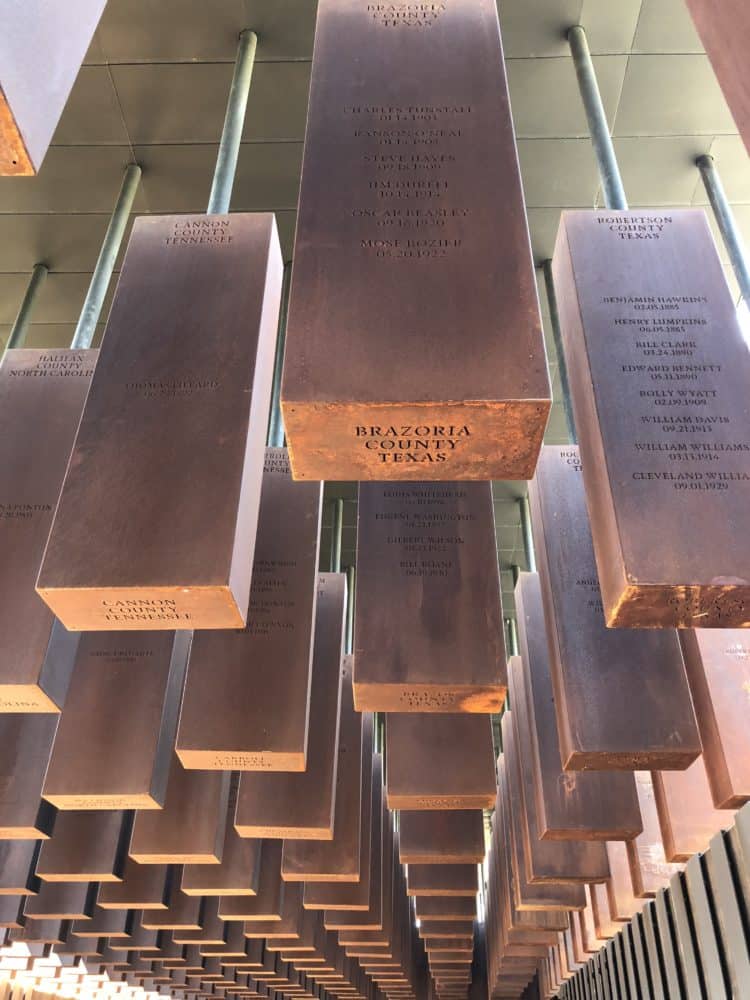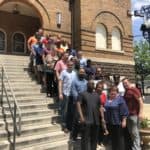Sankofa Reflection 2018: Kenya Mejia, Urban Refuge Church
The Twin Cities Sankofa trip is definitely the start of something bigger. I will say there was a range of emotions throughout the trip for me. There was deep sadness, anger, and even joy. I was happy to be doing this with Christ at the center, because without Christ, it could have been easy to stay angry because of all the sin in the world that is still present now, or the other extreme would have been to have become ambivalent and think this was in the past and there is not much I can do about it now.
The trip was primarily White and African American pastors and ministry leaders, but as an American and as a person of color, I knew it was important to be there and learn.
I didn’t have these reminders of the realities of people of color in the United States from the empowering side…

It was shocking to see dates of the most recent lynchings being so close to us in history-the latest date recorded was 50 years ago. I also found a memorial that listed California, my home state and Minnesota, as places where lynchings happened.
Lynching wasn’t just a southern problem. Although slavery ended in 1863 after 400 years, it wasn’t until 1965 that African Americans were able to vote without legalized systems creating obstacles to their civil rights. So again, still our very recent history.
I have always been grateful for how my high school teacher tried to portray both sides of history and I quickly realized that it had been an empowering tool. It helped me understand that my intellect was not defined by the limited resources our schools had, or why people were quick to attribute my college acceptance as a result of my gender and color of my skin. But just like we forget the power of our God if we do not remain in the word in between Sundays, I didn’t have these reminders of the realities of people of color in the United States from the empowering side after I left high school.
[pullquote]What are the sacrifices I need to be willing to make?[/pullquote]
Stereotypes had eaten away at my self-worth more than I had realized. I survived college and graduate school because my identity was in Christ, but there were daily reminders of where I belonged statistically.
Many of the people of color I saw in my graduate university were doing service roles. It was encouraging to see how brave people were during the Civil Rights movement. I was moved by the videos of “training sessions” where people practiced sit-ins and other members of the group harassed them to mimic the treatment they would get. Yet, they were able to maintain their composure while people spat at them and physically harassed them.
Now with God on my side and a new reminder and awareness of the struggle of people of color in America, I left this journey inspired. I am on a team at The Urban Refuge church that encourages conversations about racial reconciliation, and they are never easy. But the leaders of the Civil Rights Movement were committed to getting a glimpse of heaven here on earth (…every nation, from all tribes and peoples and languages, standing before the throne and before the Lamb…).
Medgar Evers designed his home to keep his family safe from attacks. He knew the dangers his family faced, but it was a sacrifice he was willing to make. What are the sacrifices I need to be willing to make?

I would say being physically present in historic Slavery and Civil Rights sites does not leave us the option to question history. We have to come face-to-face with our nation’s cruel past, and yet, with the stories of triumph, we are inspired to continue being “the change we wish to see.”
Kenya Mejia is on staff at The Urban Refuge Church

